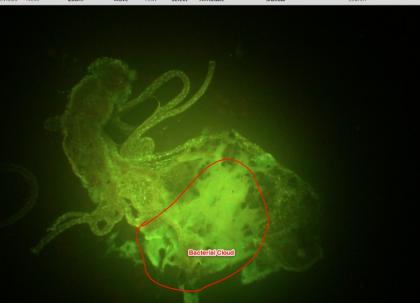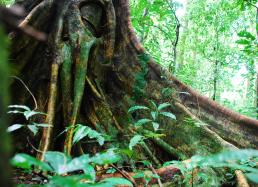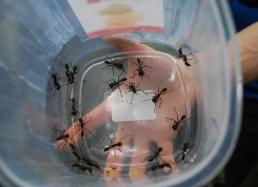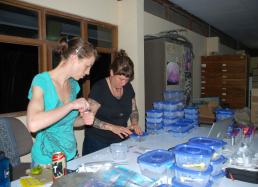Blog #12: Bacteria & Bullet Ants
One study organism of our lab is the infamous giant Neotropical bullet ant (Paraponera clavata.) Unlike most ants that have specialized diets, bullet ants are dietary generalists that feed on a wide range of food sources ranging from plant sap (such as nectar) to other insects and small vertebrates (such as frogs).
Our aim is to study the microbial community—the bacteria—living in the guts of ants to try and understand how these ants are able to absorb the nutrients they need from the various diets they consume. The thought is that, since plant-eaters lack protein in their diets and insect/meat eaters lack other equally necessary nutrients, bacteria are somehow providing assistance by spanning these nutritional gaps.
The goal is twofold: we hope to understand exactly how different kinds of bacteria help each ant species get what they need from their diets, and we hope to understand how each ant species acquires their helpful bacteria. The question is whether different species share the same bacteria because they obtain it from a common habitat, or whether each species has its own “tailor-made” bacteria that have evolved with it over time, getting passed down throughout the generations.
So in the case of bullet ants, which each both plants and animals, we can compare the bacteria living in their guts with those of ant species that are purely predators or specialize mostly in plants. And since we’re sampling all kinds of ants from the same locations, it will be interesting to see how much overlap we find between the different habitats.
Beyond the purely dietary studies, our lab also aims to understand the phylogeographic history of ants. In other words, by mapping out ant distributions and sampling ants from different species and different populations within the same species, we hope to better understand how ants are related to one another and how they've evolved and diversified over time within their environment.
For example, we know that bullet ants have an extremely wide distribution range from Honduras in the north to Brazil in the south. But this expedition gives us a chance to better map out the populations of bullet ants that occur in the lowland forests of Costa Rica—with the side benefit of allowing us to expand our Museum collections of this ant species, which we can use in the future to monitor ant populations and gene flow over time.
With collecting bullet ants as our goal over the next few days, we drove to the Estacion Biological San Gerardo, which is located near a stretch of pristine rainforest. Rain deterred our hunting the first day because ants are much less active and therefore hard to find during wet weather (see Photo #1 below.) In fact, it rained so hard our rubber boots kept filling up with water!
Our second day dawned with promisingly bright blue skies that allowed us to systematically comb through the forest and cover all the trails. We even went off-trail to look for ants or nest entrances at the base of large trees and strangler figs, where bullet ants are likely to nest (see Photo #2 below.) Although we found several other ant species—and a dead howler monkey (see Photo #3 Below)—we still had no luck locating the elusive bullet ants.
At this point, we began to wonder whether this stretch of rainforest might simply be too small or too high in elevation to harbor bullet ants. The group is known to favor lowland forests, and although the altitude we recorded with our GPS device was approximately 500 m (1500 ft), we questioned whether this elevation might already be too high?
With this thought in mind during our third day of bullet-ant hunting, we moved on to a science station (the Estacion Biological Caribe) at a lower elevation. Sure enough, elevation was the key, and within a few hours we managed to collect ants from 11 different nests (see Photo #4 below.) What a great collecting day!
Using 12-inch-long tweezers to ensure we didn’t get bitten, we nabbed the ants from their perches and placed them into our various collection containers. Some of the ants—destined to become part of our Museum collections representing Costa Rican ant species—went immediately into tubes filled with preservatives.
Other bullet ants went into plastic bins that we’d painted with fluon, a form of liquid Teflon so slippery that the seemingly Velcro-footed ants couldn't climb out of their “cage.” We kept these ants (as well as ants from several other species) on a special diet of sugar water for about two weeks (see Photos #5 and #6 below.)
The two-week diet plan gives each ant’s digestive systems time to clear itself of any stray microbes temporarily acquired and ingested as part of its last meal in the wild. That way, when we perform analyses on the ant’s guts back in the Moreau Ant Lab at home, we’re sampling only the resident gut microbes that live permanently in the ant’s digestive track.
To learn more about how we sample ants’ guts, take a look at our “Video Report #8: Back in the Lab,” and stay tuned for more details on our discoveries when Corrie posts her final blog for the expedition.
Cheers,
Steffi









